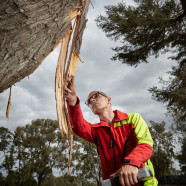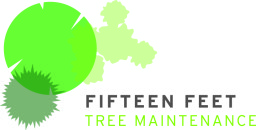
Tree Assessment
Trees can become a hazard for many reasons ranging from age, storm damage, uprooting, disease, nutrient deficiency, structural damage, decay, root problems, soil problems, disease or pest infestation. Even seemingly healthy trees can sometimes fall or have issues!
When a tree has a condition that poses a safety risk to people or property, it’s important to address the issue as soon as possible before incident or injury. Hazardous trees can cause serious damage.
How does an arborist assess the structural health of a tree?
Visual tree assessment (VTA)
Chris Polifka, the director of fifteenteet tree maintenance has undertaken extensive training at the Karlsruhe Institute of Technology, Germany with Prof. Dr. Claus Mattheck, the founder of Visual Tree Assessment (VTA).
VTA is a non-invasive method of examining the health and structural condition of individual trees. It is a systematic approach, which directs the arborist through a procedure of routine biological observations and analysis to determine tree health, using what is known as ‘failure criteria’. It has become the standard approach for surveying trees worldwide.
By visually examining a tree, an arborist can gather information on the condition of its roots, trunk, main branch structure, crown, buds and leaves to make an assessment and draw conclusions about its general condition, health and vitality.
Visual Tree Assessment
Key Questions
Tree health
1. Is the tree alive or dead?
2. Are there dead branches or other visible signs of ill-health – dead leaves or twigs at the end of branches?
3. Are there visible signs of rot or fungal attack on the trunk?
4. Are there dead or sagging branches?
5. Are there signs of ageing?
Tree structure
1. Is the tree balanced or leaning? Is any lean due to damage?
2. Approximately how big and heavy is the tree?
3. Are there structural weaknesses such as co-dominant forks?
4. Are there visible signs of damage to roots, trunk, or branches, such as wounds, cracks, or bulges?
5. Does any damage observed compromise the tree’s structure (such as root damage or branch loss on one side)?
6. Has the soil been softened by rain?
7. Is the soil cracked or bulging?
8. Are there any loose branches suspended in the canopy?
Assessing location
1. What areas are at risk from falling branches?
2. What areas are at risk from the whole tree falling? (Estimate distance)
3. Is the tree particularly susceptible to wind loading from any particular direction?
4. Does the tree have a large ‘sail’ area (wind load)?
5. Have tracks, clearing, or other works changed the way the tree has grown?

